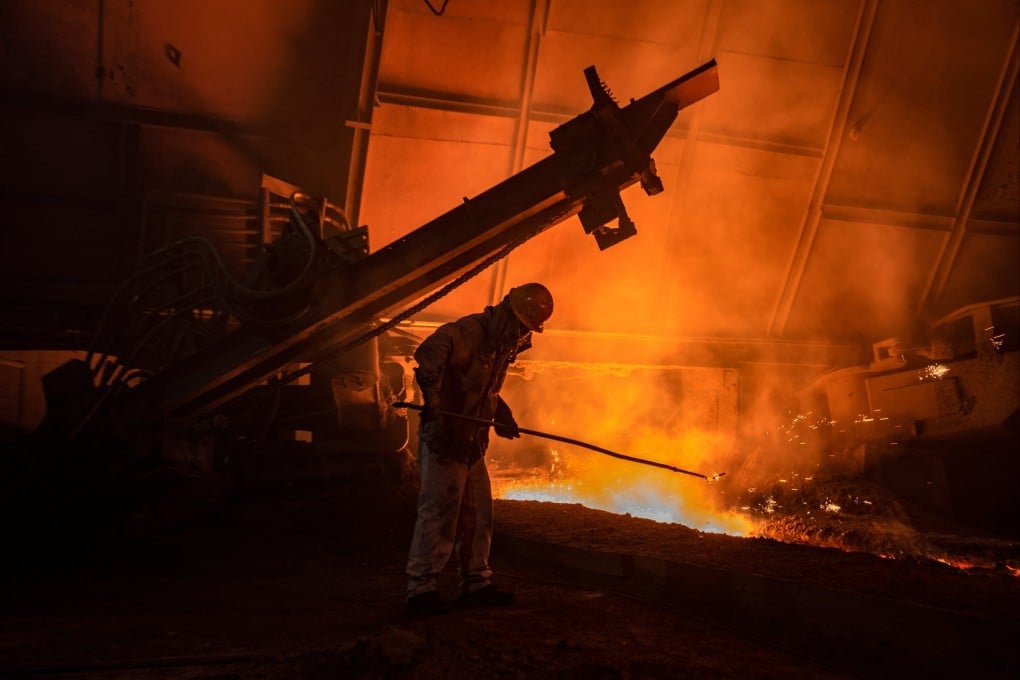China’s steel sector could cut carbon emissions by more than 10% next year with faster shift to clean production: report
- ‘Modest adjustments’ to plans for use of electric arc furnaces (EAFs) versus coal-fired furnaces would pay off, Global Energy Monitor says
- As of January, EAFs account for 14 per cent of China’s steelmaking capacity, according to report

China’s steel sector could cut its greenhouse-gas emissions by over a tenth from current levels by next year if the country gets more ambitious about adopting cleaner production technology, according to US think tank Global Energy Monitor (GEM).
The emissions reduction – roughly the same as taking 47 million petrol-powered passenger vehicles off the road – would be possible if Beijing were to set a more ambitious target for the use of electric arc furnaces (EAFs) and accelerate its shift away from the dominant, coal-based process, known as blast furnace-basic oxygen furnace (BF-BOF), the organisation said in a report published on Tuesday.
Pushing EAF to 20 per cent of total production next year, rather than the current target of 15 per cent, could reduce the sector’s emissions by 11 per cent, versus 8.7 per cent with the lower target, GEM estimated.
“Given its outsized impact on carbon emissions, even incremental changes to the steel industry could significantly reduce China’s carbon footprint,” said Jessie Zhi, researcher at GEM and one of the authors of the report.

As of January, China had 1,064 million tonnes per annum (Mtpa) of steelmaking capacity, 86 per cent based on BF-BOF and 14 per cent using EAF, GEM’s data showed. That puts China’s capacity just one percentage point away from the 2025 EAF production target of 15 per cent, set by the Ministry of Industry and Information Technology (MIIT) in 2020.
While the 15 per cent target would reduce emissions by 179 Mtpa, raising the target to 20 per cent would eliminate 217 Mpta, or 21 per cent more emissions, according to Zhi.
